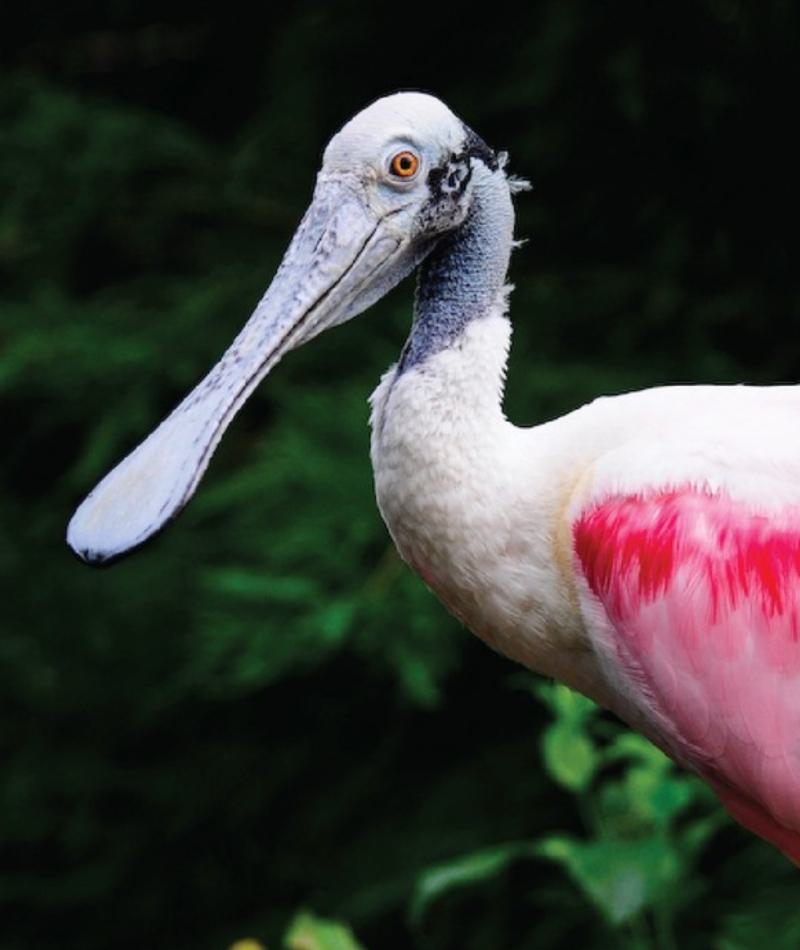
Roseate Spoonbill
Platalea ajaja
Did you know?
- Roseate spoonbills are a part of the Threskiornithidae family, which they share with other large wading birds.
- Spoonbills are named for their spoon-like bills.
- The roseate spoonbill is the only one of six spoonbill species with brilliantly colored plumage.
- They live in wetlands in Southern United States, West Indies, Central America and South America.
- A female will lay one to four eggs per clutch.
Adaptations
All spoonbills have a flat, wide bill that acts like a spoon. They use their bill in a special way to catch prey, known as "head-swinging." The birds plunge their bill nearly vertically underwater and swing it side to side in wide arcs. In this way, they snag small animals from the lake bottom. Their bill is also equipped with sensitive touch receptors that detect vibrations. When something touches the inside of the spoon, the bill closes on it quickly. There keen sense of touch and fast reflex allow the bird to feed in cloudy water and at night. A spoonbill's nostrils are located at top of the bill, making it possible for the bird to breathe while the bill is underwater.
Courtship and Young
Roseate spoonbills do not mate for life, but they do keep the same mate for an entire breeding season. Before they breed, the male and female tempt each other in ritual courtship displays. Both sexes cooperate to build the nest: the male collects most of the material and the female does most of the building. Spoonbills make large, well-constructed nests from sticks, and line them with leaves and grass. They build their nest in trees.
Females typically lay one to four eggs, and both the male and female take turns sitting on the clutch, usually for about three weeks. After the chicks hatch, both parents feed them by regurgitating remains of their last meal. Chicks leave the nest at four or five weeks. They usually remain nearby and are fed by their parents until at least eight weeks, at which time they are able to fly.
Threat Level
- Unknown
- Common
- Near Threatened
- Threatened
- Endangered
- Critically Endangered
- Extinct in the Wild
Common
The Roseate Spoonbill is widespread and abundant.
Range
Southern United States, West Indies, Central America, South America
Habitat
Freshwater and saltwater wetlands

We care about roseate spoonbills
We support roseate spoonbills in the 1904 Flight Cage at the Zoo. Learn more about how we are helping wildlife around the world: Dedicated to Conservation
Find this animal in Historic Hill

SAINT LOUIS ZOO ZONE
Historic Hill
Historic Hill is a lovely stroll through one of the oldest parts of the Saint Louis Zoo. From the 1904 World’s Fair Flight Cage to the Spanish architectural flavor of the 1920s in the Bird House, Primate House and Herpetarium to the finishing touches of our thoroughly modern exhibits, this area of the Zoo has a unique ambiance and a nostalgic history that make it a great destination.

